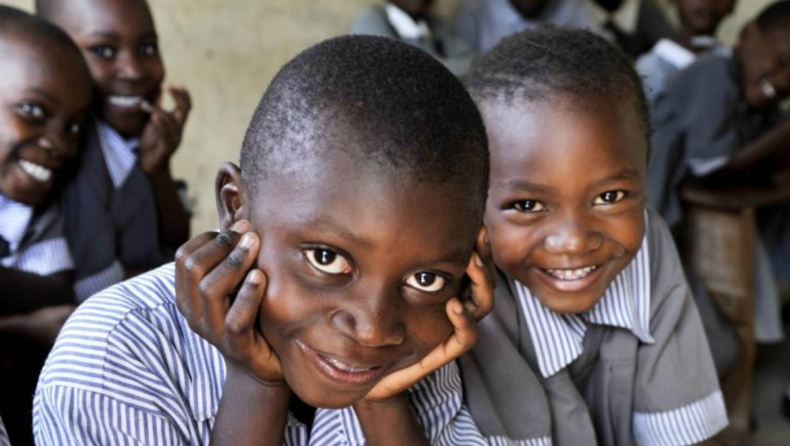The day was created to raise awareness about the global issue of child labor and to find ways to eradicate it. World Day Against Child Labor is being observed today. The term “child labor” refers to the practice of exploiting children, most commonly in developing countries, to gain financial gain at the expense of their youth and the opportunity to receive an education.
Pope Francis addressed the issue of child labor in St. Peter’s Square. He stated, “It is not possible to turn our eyes to the exploitation of children, who are robbed of the right to play, to learn, and to dream.

On June 12, people throughout the world commemorate Child Labour Day, also known as World Day Against Child Labor. Since 2002, when the International Labour Organization (I.L.O.) designated it an international day to raise awareness about child labor and the need to take measures to prevent it, the day has been observed across the world. Since 2002, June 12 has been observed as Child Labour Day, also known as the World Day Against Child Labour. On this day, nations and international organizations unite in an attempt to combat the use of children in labor-intensive industries. Aside from raising awareness and organizing activities, the most essential thing is to develop ways to remove child labor from its roots. More than half of all of these children are being forced into some of the worst types of child labor, so this problem has to be addressed head-on. These are dangerous and very criminal activities, such as forced prostitution, that can come from human trafficking.
2022 Theme: “Universal Social Protection to End Child Labour”
The topic of the international day that will be observed in 2022 will focus on increasing investments in social protection systems and schemes to set up robust social protection floors and safeguard minors from being forced into labor.
Tremendous headway has indeed been made in the fight against child labor during the last two decades; nevertheless, that headway has slowed over time and has even come to a standstill for the years 2016-2020. There are still 160 million children throughout the world who are forced to work, and some of them are as young as 5.
Fighting poverty and vulnerability as well as eliminating and preventing child labor requires the establishment of government-run social safety institutions. When families are struggling to make ends meet, sending children to work is a choice that many are forced to make. Social protection is not just a human right but also an effective instrument for policymakers. However, as of the year 2020 and before the COVID-19 crisis took hold, only 46.9 percent of the world’s population was effectively covered by at least one social protection benefit, while the remaining 53.1 percent of the population, which amounted to as many as 4.1 billion people, was was were left wholly unprotected. Even less than a majority of youngsters are covered. There was a shortage of social protection for around 1.5 billion children, or over three-quarters of all children.
To make significant headway in eradicating the practice of child labor, it is necessary to expand investments in universal social safety systems. This must be done as part of an all-encompassing and integrated strategy to combat the issue.
The occurrence of child labor
It is common practice to subject children all around the world to non-hazardous types of labor, whether or not they are compensated for their efforts. However, they are categorized as child laborers when they are too young to work or when they are involved in dangerous activities that may compromise their physical, mental, social, or educational development. This is the case when laborers are involved in hazardous activities that may compromise their development. To put it another way, slightly more than one in every four children between the ages of five and seventeen in the world’s least developed countries are working in jobs that are harmful to their physical and mental development.
Both the proportion of children who are engaged in child work (which is one-fifth) and the absolute number of children who are engaged in child labor (which is 72 million) place Africa at the top of the list for regions. Asia and the Pacific come in at number two on the list for each of these indicators, with the absolute number of children involved in child labor standing at 62 million, accounting for 7 percent of the global total.
Together, the areas of Africa, Asia, and the Pacific are responsible for roughly nine out of every 10 youngsters who are employed as laborers across the world. The remaining population of children who are forced to work is distributed as follows: 11 million in the Americas, 6 million in Europe and Central Asia, and 1 million in the Arab States (1 million). In terms of prevalence, child labor affects three percent of children in the Arab states, four percent of children in Europe and Central Asia, and five percent of children in the Americas.
Although the number of children who are employed as laborers is greater in middle-income nations, the percentage of children who are employed is higher in low-income countries. 7 percent of all children in nations with upper-middle incomes and 9 percent of all children in nations with lower-middle incomes are engaged in child work. Child labor is more prevalent in countries with lower-middle incomes. Statistics on the total number of children engaged in child labor in each national income group indicate that middle-income countries are home to 84 million of the world’s 152 million children who are employed as laborers, accounting for 56 percent of the total number of children engaged in child labor. High-income countries are home to an additional 2 million child laborers.
“Parents are unaware of child rights and community members will not complain to the authorities.” –Mathews Philip, National Convenor, CACL
Did you know?
“At the beginning of 2020, 1 in 10 children aged 5 and over were involved in child labor worldwide—equating to an estimated 160 million children, or 63 million girls and 97 million boys.”
World Day Against Child Labour: Importance
The focus of the day is on restoring the dignity of the lives of children harmed by child labor and meeting their educational, medical, and other needs. It is commemorated through campaigns, activities, and initiatives that also highlight the detrimental emotional and physical effects that child labor has on children around the world.













